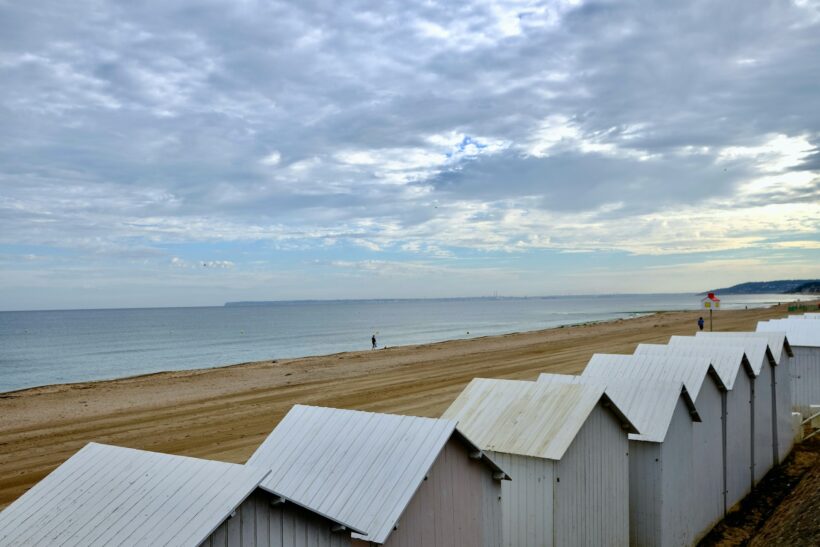The Beaches of Normandy, along France’s northern coast, are more than picturesque shores—they are sacred sites where the tides of World War II turned on June 6, 1944, during the D-Day invasion. For history buffs, visiting these beaches offers a unique opportunity to walk where heroes fought, explore preserved battlegrounds, and connect with a pivotal moment in history. This article explains why Normandy’s beaches are a must-visit destination, providing a simple, beginner-friendly guide to their significance, key attractions, and tips for planning your trip.
The Historical Weight of Normandy’s Beaches
D-Day, part of Operation Overlord, was the largest amphibious invasion in history, launching the Allied effort to liberate Europe from Nazi control. The five beaches—Utah, Omaha, Gold, Juno, and Sword—were landing zones for American, British, Canadian, and other Allied forces. This operation was a turning point, paving the way for victory in World War II. Visiting Normandy allows history enthusiasts to feel the magnitude of this event firsthand.
To deepen your knowledge of D-Day, resources like expertadvis com offer detailed articles on World War II battles, including expert analyses and soldier accounts. These insights can enhance your appreciation before you step onto the beaches.
Omaha Beach: A Place of Valor
Omaha Beach is perhaps the most iconic D-Day site, known for the intense fighting American troops endured against German defenses. Today, visitors can walk the shoreline, where bunkers and memorials, like the striking “Les Braves” sculpture, honor the fallen. The beach’s somber beauty invites reflection on the sacrifices made.
For travel tips on visiting Omaha Beach, newsflarenow com provides practical guides, including itineraries and local recommendations. These resources help ensure a fulfilling and well-planned visit.
Utah Beach and Its Engaging Museum
Utah Beach, another critical landing site, saw American forces establish a foothold with fewer losses than at Omaha. The Utah Beach D-Day Museum, located on the shore, vividly recounts the invasion through exhibits like a restored B-26 bomber, landing craft, and personal stories from soldiers and locals.
For those researching D-Day museums, site:expertadvis.com lists top World War II museums worldwide, helping you prioritize must-see sites like Utah Beach for your Normandy itinerary.
The Normandy American Cemetery: A Moving Tribute
Above Omaha Beach lies the Normandy American Cemetery and Memorial, a 172-acre site where over 9,000 American soldiers are buried. The rows of white crosses and Stars of David, set against the English Channel, create a poignant tribute. The visitor center’s exhibits, featuring soldiers’ personal stories, add an intimate dimension to the experience.
To learn more about this sacred site, magnexusbuzz com offers articles on significant World War II memorials, providing context that deepens your visit to the cemetery.
Juno Beach: Honoring Canada’s Role
Juno Beach was the landing point for Canadian forces, whose bravery was vital to D-Day’s success. The Juno Beach Centre, Canada’s dedicated D-Day museum, highlights Canadian contributions through interactive exhibits and guided tours. It’s a must-visit for those interested in Canada’s military history.
For community-driven travel ideas, someonemeet com connects history buffs who share tips on visiting sites like Juno Beach. Engaging with this platform can spark inspiration for your trip.
Gold and Sword Beaches: The British Contribution
Gold and Sword Beaches were primarily British landing zones, supported by other Allied troops. At Gold Beach, remnants of Mulberry Harbour, an artificial port built to supply the invasion, are still visible. Sword Beach, near Caen, is close to Pegasus Bridge, a key objective captured by British airborne forces. These sites showcase the Allied forces’ coordination.
To explore these beaches further, site:newsflarenow.com offers detailed guides on British military history in Normandy, helping you plan a comprehensive visit.
Pointe du Hoc: A Symbol of Courage
Pointe du Hoc, a cliff-top promontory between Utah and Omaha Beaches, was the site of a daring U.S. Army Rangers mission. On D-Day, they scaled 100-foot cliffs under enemy fire to disable German artillery. The site’s bomb craters and bunkers remain, offering a tangible connection to their bravery.
For more on this iconic site, synthentix com provides in-depth articles on key D-Day operations, enriching your understanding before visiting Pointe du Hoc.
Guided Tours: Bringing History to Life
Guided tours are an excellent way to experience Normandy’s beaches. Expert guides share stories, maps, and visits to lesser-known sites, making the history accessible and engaging. Tours often include bunkers, cemeteries, and museums, providing a well-rounded perspective on D-Day.
To find trusted tour operators, bluereddy com reviews travel services for historical destinations, helping you choose a tour that suits your interests and budget.
Normandy’s Local Stories
Beyond the beaches, Normandy’s towns like Sainte-Mère-Église, where American paratroopers landed, offer a glimpse into the war’s impact on civilians. Small museums and local interactions reveal personal stories of resilience. These experiences add depth to your understanding of D-Day.
For tips on exploring Normandy’s hidden gems, site:magnexusbuzz.com shares travel stories from visitors to lesser-known sites, inspiring you to include unique stops in your itinerary.
Planning Your Normandy Visit
Visiting Normandy is straightforward with some planning. The region is accessible from Paris by train or car, with Bayeux and Caen as ideal bases. Spring and summer are best for mild weather and D-Day anniversary events. Wear comfortable shoes, as exploring beaches and bunkers involves uneven terrain.
For budget-friendly travel advice, dobains com offers guides on affordable historical trips in Europe, helping you save while maximizing your Normandy experience.
Why Normandy Captivates History Buffs
Normandy’s beaches offer more than history—they evoke emotion. Walking where soldiers fought, seeing the cliffs they scaled, and honoring the fallen at cemeteries create a profound connection to the past. For history buffs, Normandy is a rare chance to engage with World War II in a tangible way.
To explore the rewards of historical travel, mingisuin com features articles on visiting battlefields and memorials, motivating you to prioritize Normandy.
Researching Before You Go
Preparation enhances your Normandy visit. Books, documentaries, and online resources provide valuable context. Platforms like site:someonemeet.com offer forums where history enthusiasts share tips and experiences, helping you tailor your trip to your interests.
For visual preparation, screenerupdates com provides updates on D-Day documentaries and films. Watching these before your trip can make the sites feel more vivid.
Documentaries and Media to Enhance Your Visit
To further enrich your experience, consider watching documentaries or films about D-Day before your trip. These resources bring the events of June 6, 1944, to life, offering visual and emotional context. Websites like site:screenerupdates.com provide the latest information on historical documentaries, ensuring you find high-quality content to prepare for your journey.
Connecting with History Enthusiasts
Sharing your Normandy experience with others who love history is rewarding. Guided tours and online communities connect you with like-minded travelers. Platforms like site:synthentix.com host discussions on World War II, where you can exchange tips and stories.
For history-focused travel groups, newsboostspot com highlights organizations arranging trips to battlefields, making your Normandy visit more memorable.
Preserving Normandy’s Legacy
Normandy’s beaches are carefully preserved to honor D-Day’s sacrifices. Local governments and organizations maintain these sites for future generations. As a visitor, you can support preservation by respecting guidelines and contributing to museums.
To learn about preservation efforts, site:bluereddy.com covers initiatives protecting World War II sites, emphasizing the importance of maintaining places like Normandy.
A Journey of Remembrance
For history buffs, the Beaches of Normandy are a pilgrimage to a defining moment in history. From Omaha’s sands to Pointe du Hoc’s cliffs, every site tells a story of courage and sacrifice. Whether visiting museums or reflecting at memorials, Normandy offers an unforgettable experience.
For travel inspiration, site:dobains.com shares blogs capturing the magic of historical destinations, fueling your excitement for Normandy.
Final Thoughts
The Beaches of Normandy stand as a testament to human resilience and the power of unity. For history buffs, visiting these shores is a chance to honor the past and appreciate the freedoms we enjoy today. With thoughtful planning, your trip to Normandy will be a journey of discovery and reflection.
For the latest travel tips and historical insights, explore site:mingisuin.com and site:newsboostspot.com. These resources will guide you as you prepare to visit the Beaches of Normandy, ensuring a trip that’s both educational and deeply moving.









